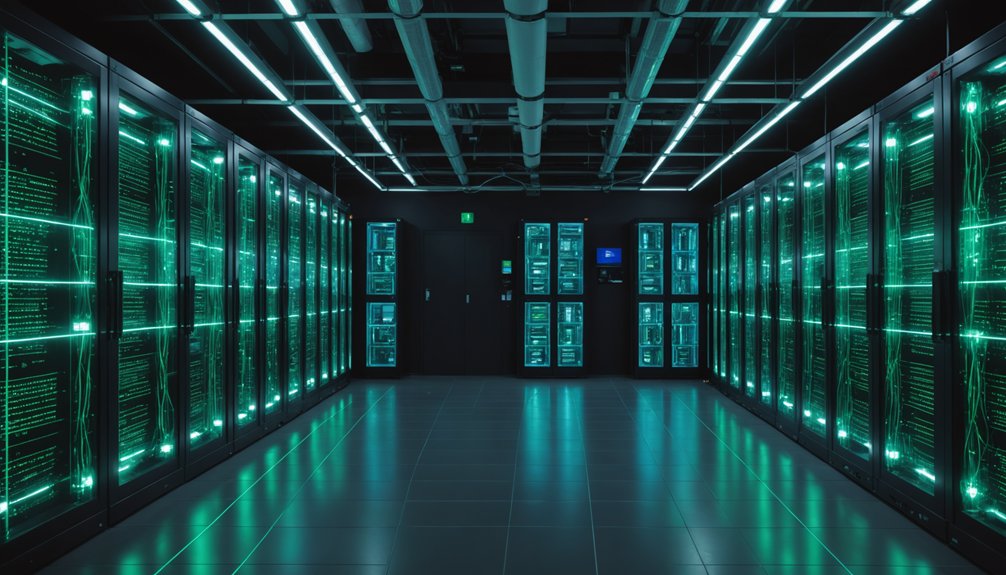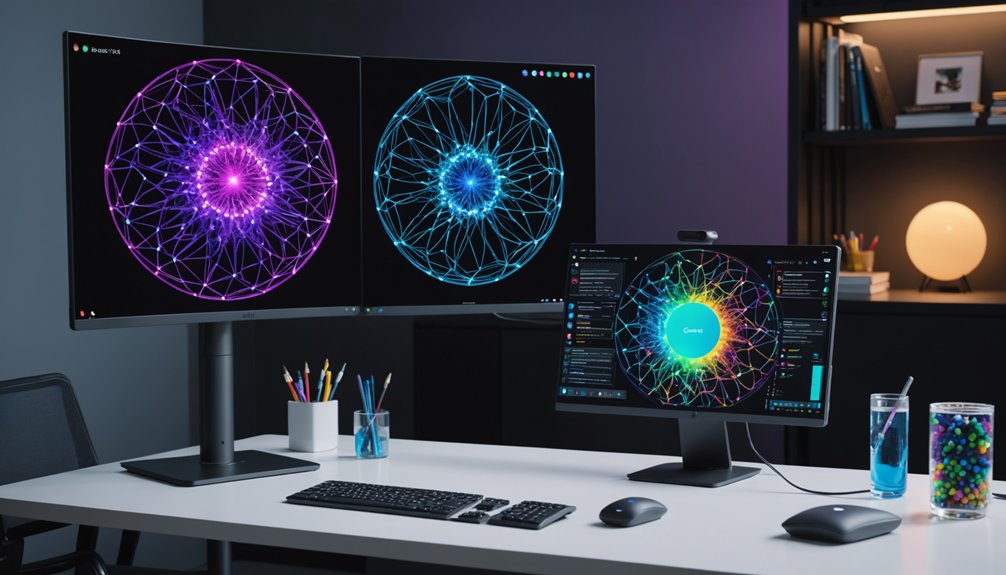Securing AI applications isn't optional anymore. Developers must integrate security from design through deployment, using encryption standards like AES-256 and implementing adversarial training to prevent attacks. Data boundaries matter. So does input sanitization. Multi-factor authentication stops unauthorized access, while regular audits guarantee compliance with GDPR and HIPAA. Security champions within teams foster a cybersecurity culture that's desperately needed. The complete security picture goes much deeper than most realize.

As artificial intelligence transforms every corner of modern business, the stakes for security have never been higher. Organizations rushing to implement AI often sideline security concerns in their haste to innovate. Big mistake. The vulnerabilities unique to AI systems demand robust protection frameworks from day one, not as an afterthought when something inevitably breaks.
Security must be baked into AI development from the design phase. This "security by design" approach identifies vulnerabilities early, saving countless headaches down the road. Threat modeling helps developers anticipate attacks specific to AI systems. Model-based agents can help identify and respond to security threats more effectively than simple reflex agents. Regular code reviews aren't optional anymore – they're essential survival tools in today's threat landscape.
Security isn't a feature but the foundation of responsible AI development—neglect it only at your peril.
Data security forms the cornerstone of AI protection. Strong boundaries defining what data AI systems can access, strict role-based controls limiting who sees what, and thorough data cataloging to track sensitive information – these aren't nice-to-haves. They're non-negotiable safeguards. Encryption standards like AES-256 protect data whether it's moving or at rest. Adding blockchain technology can further enhance data integrity by providing a tamper-proof and transparent record of all data used in AI systems. And yes, you absolutely need to validate every single input to prevent exploitation. Statistical analysis of data patterns can help detect potential security breaches in AI systems.
The models themselves need hardening through techniques like adversarial training. This makes them resilient against attacks designed to trick or manipulate AI systems. Input sanitization prevents garbage from becoming dangerous output. For generative AI, proper prompt handling stops bad actors from engineering harmful responses through clever prompts.
Monitoring never sleeps. Continuous surveillance of AI systems detects anomalies in real-time. Multi-factor authentication prevents unauthorized access. Regular security audits enforce compliance with regulations like GDPR and HIPAA.
Employee training creates the human firewall. Regular sessions on AI security best practices and incident response drills prepare teams for inevitable attacks. Security champions within development teams foster a culture where cybersecurity isn't just IT's problem. All team members should be trained on the OWASP Top 10 vulnerabilities for LLMs to recognize critical security issues in AI applications.
Containerization provides essential isolation of systems during deployment. The protection envelope must extend throughout the AI application lifecycle, from conception to retirement. No exceptions.
Frequently Asked Questions
How Do AI Security Needs Differ From Traditional Application Security?
AI security diverges from traditional AppSec in fundamental ways.
It deals with binary model files, not just code. Neural network graphs are way more complex than control flow graphs.
New threats exist – adversarial inputs, data poisoning, prompt injection. Nobody's worrying about those in regular apps.
Testing's different too. You need specialized tools for AI-specific vulnerabilities.
And frameworks? OWASP LLM Top 10 isn't your standard security checklist.
Can Existing Security Frameworks Accommodate Ai-Specific Vulnerabilities?
Existing frameworks can accommodate AI vulnerabilities—but with adaptation.
The NIST AI RMF specifically addresses data poisoning risks, while MITRE ATLAS maps out AI-specific threats.
Some frameworks weren't built for this. They're playing catch-up.
A patchwork approach is emerging: traditional frameworks get AI extensions, new AI-focused frameworks fill gaps.
It's messy but evolving fast. No silver bullet yet.
Security teams must blend multiple approaches.
What Certifications Demonstrate Expertise in AI Security?
Several certifications validate AI security expertise. The Certified Security Professional for AI (CSPAI) is ANAB-accredited, focusing on integration and sustainability.
Certified AI Security Fundamentals (CAISF) covers system protection. The AI Security & Governance cert tackles GenAI and global laws.
There's also the Certified Generative AI in Cybersecurity. Nice bonus? Many align with the NICE framework.
These aren't cheap, but they'll definitely make someone more marketable. Security folks need to keep up somehow.
How Frequently Should AI Security Protocols Be Updated?
AI security protocols aren't a one-and-done deal. They require continuous monitoring, no exceptions.
Daily checks? Mandatory.
Weekly updates? Probably.
Monthly overhauls? Absolutely.
The frequency varies based on threat landscape, system complexity, and potential impact of breaches.
High-risk systems demand daily updates.
Others might manage with weekly or monthly refreshes.
Bottom line: update whenever threats evolve.
Which is, let's face it, constantly.
Are There Industry-Specific AI Security Regulations to Consider?
Yes, industry-specific AI security regulations are everywhere.
Healthcare has HIPAA, making patient data protection non-negotiable. Financial firms must follow FINRA guidelines—no exceptions.
The EU AI Act applies risk-based assessments across sectors. Critical infrastructure? CISA's got rules for that.
Each industry faces its own regulatory maze. ISO/IEC 42001 offers general best practices, but sector-specific compliance is mandatory.
Ignore these regulations? Good luck with those fines.




